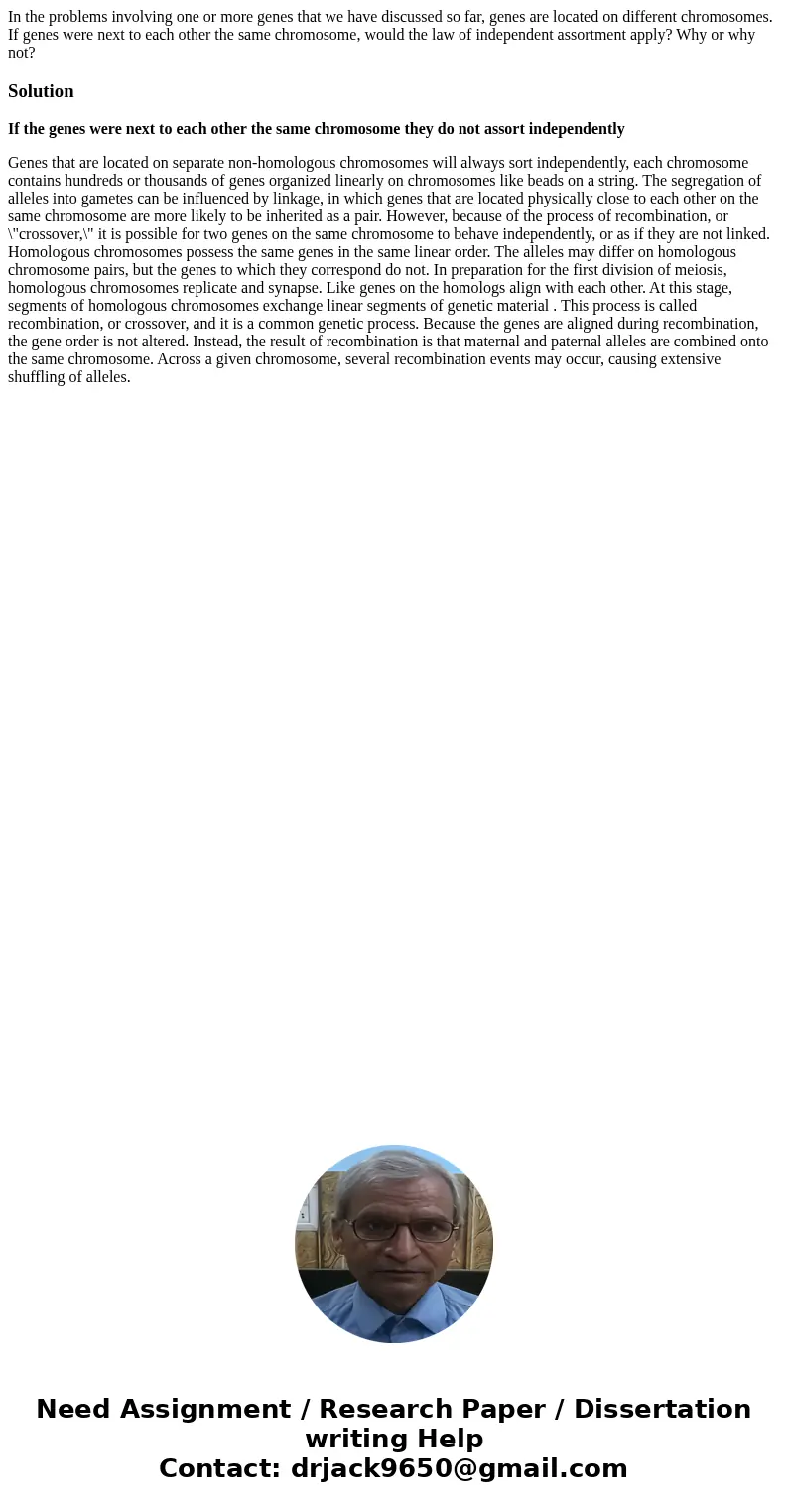In the problems involving one or more genes that we have dis
Solution
If the genes were next to each other the same chromosome they do not assort independently
Genes that are located on separate non-homologous chromosomes will always sort independently, each chromosome contains hundreds or thousands of genes organized linearly on chromosomes like beads on a string. The segregation of alleles into gametes can be influenced by linkage, in which genes that are located physically close to each other on the same chromosome are more likely to be inherited as a pair. However, because of the process of recombination, or \"crossover,\" it is possible for two genes on the same chromosome to behave independently, or as if they are not linked. Homologous chromosomes possess the same genes in the same linear order. The alleles may differ on homologous chromosome pairs, but the genes to which they correspond do not. In preparation for the first division of meiosis, homologous chromosomes replicate and synapse. Like genes on the homologs align with each other. At this stage, segments of homologous chromosomes exchange linear segments of genetic material . This process is called recombination, or crossover, and it is a common genetic process. Because the genes are aligned during recombination, the gene order is not altered. Instead, the result of recombination is that maternal and paternal alleles are combined onto the same chromosome. Across a given chromosome, several recombination events may occur, causing extensive shuffling of alleles.

 Homework Sourse
Homework Sourse